Today’s workforce is made up of more generations than ever before. Because each generation enters the workplace with different needs and expectations, the traditional methods of hiring, managing, motivating and retaining employees no longer apply. To prevent conflict and keep your employees engaged and productive, today’s employer must find ways to navigate the changing workforce.
First, let’s take a look at the different generation profiles.
THE CHANGING FACE OF AMERICA’S WORKFORCE:
MEET THE 5 GENERATIONS
Generations are defined by their life span and while research organizations and marketers may use different formulas and have different definitions, here is a breakdown of the most common generation profiles:
The Silent Generation: Born 1928 to 1945
Also known as the Traditionalists and the Veterans, the Silent Generation makes up 2 percent of the U.S. workforce. This hard-working generation values and respects authority and a traditional top-down management approach at work. For this generation, everyone pays their dues. A reward, a title, a promotion and respect, all must be earned. They tend to be very patriotic, loyal and not open to new views and prefer more formal method of communication.
Baby Boomers: Born 1946 to 1964
Known as the “me” generation, Baby Boomers are the largest living adult generation. Known workaholics, this group makes up more than 25 percent of the U.S. labor force. Their work status often defines their self-worth and they are loyal to the organizations they serve. Boomers grew up with television and were influenced by the surge of new ideas and programming. Well-educated and ambitious, Baby Boomers value collaboration, equality and ways to advance professionally. They expect some degree of respect and prefer face-to-face communication.
 Generation X: Born 1965 to 1980
Generation X: Born 1965 to 1980
Also known as the middle child of generations, latchkey kids, post-boomers, and the baby bust, Generation X make 33 percent up of the U.S. workforce. This group tends to be comfortable with rules and authority, are global thinkers, and value diversity. The computer revolution was just gaining traction during the Generation X period, so most are technology literate. Known for their do-what-it-takes mindset, Generation X prefers to communicate directly to leadership and are willing to work as hard as needed to get the job done. They also value work-life balance and are family-focused with men generally taking the lead.
Millennials: Born 1981 to 1996
Confident, independent, out-spoken and optimistic, Millennials are more educated than any other workforce in American history – it’s no wonder this generation is often is in the media spotlight.
According to a Pew Research Center analysis of U.S. Census Bureau data, Millennials are taking the lead and currently make up 35 percent of the U.S. labor market. Next year, Millennials are expected to exceed the 72 million Baby Boomer population.
Also known as Generation Y and GenNext, Millennials entered the workforce in the midst of an economic recession, the girl’s movement, reality shows and school violence. In the workplace, they are goal-oriented and expect recognition for all achievements and immediate feedback. For Millennials, respect is earned and not something based on years of employment. They support only companies, brands and causes they trust. They value job flexibility and want to have control over their career. Millennials were raised to believe that everyone wins, so they often resist the boundaries of traditional 9 to 5 employment.
Because they grew up during an era of “edutainment,” where lessons were blended with programming, such as Blue’s Clues and Schoolhouse Rock, Millennials value education and learning that is fun.
Generation Z: Born after 1997
Also, known as the iGen, Linksters, and Post Millennials, at 21 years of age, Generation Z is just beginning to emerge and represents 5 percent of the U.S. workforce. Because they grew up around digital devices, this group is veru tech savvy and have large social networks. They are quick to make a decision and in return, expect a quick response. They are highly connected multi-takers, who think globally and value individuality and experiences.
HOW-TO MANAGE MULTI-GENERATIONS
According to the U.S. Bureau of Labor Statistics population survey, 56 million Millennials, adults between the ages of 21 and 36, were looking for jobs or employed in 2017. That’s more than Generation X at 53 million, who account for one third of the U.S. labor market and 41 million Baby Boomers. While the Baby Boomer generation continues to retire at a rate of 10,000 per day, this group, as a whole, is still engaged in the workplace.
Tech savvy new graduates, outspoken change-agents, task masters, collaborators and workaholics must now all work side by side. It’s the new reality.
Here are a few ways to pull all generations together under common ground.
For employers, it’s helpful to know the demographic profile of the available local labor force. For example, if your business is located in Austin, Texas or San Diego, California, where Millennials make up more than 27 percent of the population, you may use Twitter as the primary recruitment tool to connect with job seekers.
Provide training and development opportunities. Millennials are marching into the workplace educated, tech savvy, and not afraid of change – or of sticking around for a job. According to a 2016 Deloitte survey on Millennials, 71 percent of Millennials are more likely to leave a job within two years because of the lack of opportunities for education and leadership development.
Shift management styles. Understanding the needs of each generation, managers have the opportunity to retain and motivate talent. Millennials are more engaged when coached rather than supervised. Generation X employees may work more effectively when partnered with a mentor, while Baby Boomers may be more productive when supported by professional development opportunities. And for the Silent Generation, acknowledging their experience, providing necessary training activities along with a little respect goes a long way.
Play to generational strengths. Every group provides opportunities to learn from one another. Harness the unique strengths and experiences that each group bring to your business. Allowing employees, of all ages, to make decisions and solve problems, goes a long way in building trust. Differences in the workplace create opportunities for employers to evaluate current hiring practices, internal procedures and encourages new thinking for attracting, retaining, and engaging the best employees.
Find the best way to communicate. Every generation has its own way of learning, working and communicating. Conduct a simple survey to find out the best methods for connecting with your employees. Just in the way companies search for the right marketing strategies to reach customers, employers have an opportunity to find the best communication tools to reach employees.
For example, Millennials and GenZ tend to spend more time on messaging apps than any other generation group, while older groups tend to use email more to communicate. Whether face-to-face, email, Skype or text, you may find the need for varying mix of communications methods.
Find out what each generation values. Whether it’s a work life balance, flexible hours, recognition, or professional development opportunities, each employee values something different. For example, Baby Boomers are ambitious and may value opportunities that enhance their careers. Generation X values a work life balance. Deloitte’s survey on Millennials found that when Millennial candidates weigh offers of similar financial incentives, other factors come into play, such as work life balance, flexible work opportunities, training programs and professional development, as well as an inclusive, supportive culture with supportive leadership. (LINK: https://www2.deloitte.com/content/dam/Deloitte/global/Documents/About-Deloitte/gx-millenial-survey-2016-exec-summary.pdf)
Millennials want to be engaged at work and involved in unique experiences which means organizations may need to redefine the existing programs, policies, and perks currently offered to employees. Understanding these how these factors play with each generation will help employers attract and retain the best of talent.
Partner with mentors. We can all learn from one another and having a mentor is a valuable professional benefit for any age group. In the same Deloitte survey, 94 percent of Millennials said that a mentor provided helpful advice and was important to the job because someone was overseeing their professional development.
BRIDGING THE GAP
As they get older and secure more leadership roles, Millennials will continue to have a more pronounced influence on the workplace. In the future, expect more of an emphasis on such areas as feedback, core values, ethics, work-life balance, and purpose not profit at the forefront.
The face of the workforce is constantly changing. Success depends on how your company responds. The better you understand the profile of your workforce, the better positioned you will be to move your business forward.
Source
http://www.propelhr.com/blog/minding-the-multi-generation-gap


